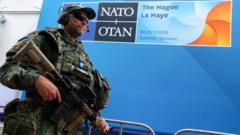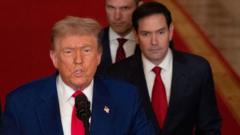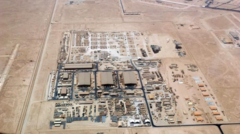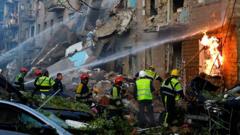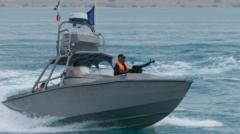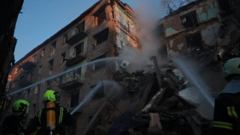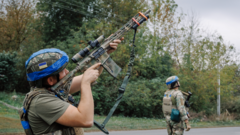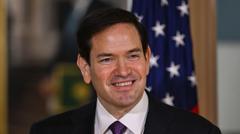The upcoming NATO summit in the Netherlands, marked by rising geopolitical tensions between Europe, the U.S., and adversaries like Russia and Iran, could redefine transatlantic relations and set new defense spending benchmarks for member nations.
**Historic NATO Summit: Europe Faces New Security Challenges**
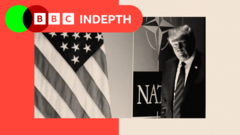
**Historic NATO Summit: Europe Faces New Security Challenges**
Amid escalating tensions in the Middle East, NATO leaders gather for a pivotal summit focused on defense spending and regional security.
As NATO leaders prepare for a crucial summit in the Netherlands, the stakes have never been higher due to recent hostilities in the Middle East, particularly following U.S. actions against Iran. This summit marks President Trump's first NATO meeting since his re-election, a period in which relations between the U.S. and European allies have become increasingly fraught over trade issues and military funding. European leaders must navigate these tensions as they seek to maintain U.S. troop presence and military support on the continent.
The summit has been carefully crafted by NATO's Secretary General, Mark Rutte, with the intent of presenting a united front to appease President Trump, who has long criticized European allies for not contributing sufficiently to defense spending. By pushing for substantial increases in military financing, European nations aim to demonstrate their commitment, hoping to sway Trump from his previously stated desires to reduce the U.S. military footprint in Europe.
However, the backdrop of escalating military actions by Iran complicates matters significantly. The U.S. must determine whether to prioritize addressing this ongoing conflict or attend the summit, where discussions on European defense contributions await. The potential fallout between Trump and European leaders is palpable; many EU members favor diplomatic avenues over military interventions.
Despite these tensions, European nations appear somewhat divided in their readiness to comply with Trump's expectations. Spain, for instance, is reported to have secured an exemption from defense spending commitments, highlighting the challenges in achieving consensus amongst member states. Meanwhile, NATO's focus remains on reaffirming the importance of the U.S. as the primary defense ally, with European countries recognizing the necessity of demonstrating military independence while cultivating U.S. support.
As Europe grapples with how to enhance its own military capabilities without relying solely on U.S. protection, the issue of budgeting for defense becomes paramount. The proposed strategy suggests a two-tier system of military spending, allocating funds both for direct defense and related infrastructure costs. Yet, questions about taxation and government spending loom over these discussions, with the prospect of increased defense budgets potentially infringing on welfare programs.
Amid the turmoil, nations like Poland have stepped forward with a strong commitment to defense, aligning their expenditures closer to the proposed NATO targets and positioning themselves as leaders in a united European defense effort. Conversely, countries less threatened by Russia's immediate proximity face more significant public resistance to military spending.
As NATO members gather, all eyes will be on how effectively they can align their interests and navigate President Trump's unpredictability. The summit is poised to be described as a pivotal moment for transatlantic relations, setting the tone for Europe's future security landscape and military obligations in a rapidly shifting geopolitical environment. With expectations running high, only time will tell if this gathering will indeed become the landmark event many diplomats anticipate.


